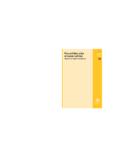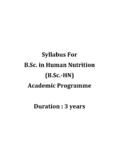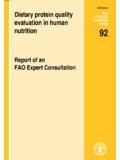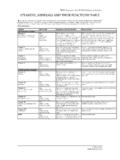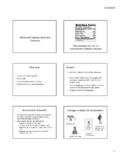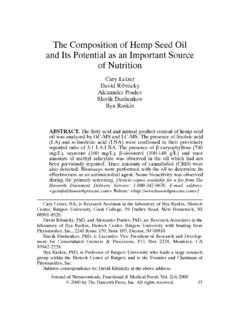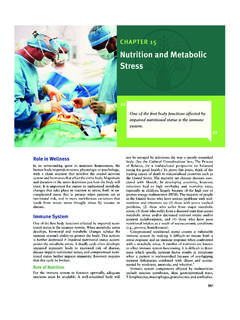Transcription of (Food and Nutrition) Scheme of Examination Semester I Marks
1 (Home Science) (Food and nutrition ) Scheme of Examination Semester I Marks : Paper I Research Methods and Statistics 100 : Paper II Statistics and Computer Applications 100 : Paper III Advanced nutrition 100 : Paper IV Applied Physiology 100 : Paper V Practical Related to Theory Papers 100 500 Semester II : Paper I Problems in Human nutrition 100 : Paper II Clinical and Therapeutic nutrition 100 : Paper III Maternal and Child nutrition 100 : Paper IV nutrition and Health of Women 100 :Paper V Practical Related to Theory Papers 100 500 Semester III : Paper I Public nutrition 100 : Paper II nutrition for Health and Fitness 100 : Paper III Assessment of nutrition Status 100 : Paper IV Improving Health and nutrition 100 :Paper V Practical Related to Theory Papers 100 500 Semester IV 1.
2 HS401:Paper I Management of nutrition Programmes 100 2. HS402:Paper II Institutional Food Administration 100 3. HS403:Paper III Food Safety and Quality Control 100 4. HSD404:Paper IV Project Work/dissertation 100 5. HSP405: Paper V Practical Related to Theory papers 100 500 FIRST Semester : PAPER-I HS101: RESEARCH METHODS AND STATISTICS Objectives: To understand the significance of statistics and research methodology in Home Science research. To understand the types, tools methods of research and develop the ability to construct data gathering instruments appropriate to the research design.
3 To understand and apply the appropriate statistical technique for the measurement scale and design. Unit-I 1. Science, scientific methods, scientific approach. 2. Role of statistics and research in Home Science discipline. Objectives of research: Explanation, control and prediction. 3. Types of Research: Historical, descriptive, experimental, case study, social research, participatory research. Unit-II 4. Definition and Identification of a Research Problem - Selection of research problem - Justification - Theory, hypothesis, basis assumptions, limitations and delimitations of the problem.
4 5. Types of variables 6. Theory of probability - Population and sample - Probability sampling: simple random, systematic random sampling, two stages and multi stage sampling, cluster sampling. - Non-Probability sampling purposive, quota and volunteer sampling/snowball sampling. Unit-III 7. Basis principles of Research Design - Purposes of research design: Fundamental, applied and action, exploratory and descriptive, experimental, survey and case study, ex-post facto, - Longitudinal and cross sectional, co-relational. 8. Qualitative Research Methods: - Theory and design in qualitative research - Definition and type of qualitative research - Methods and techniques of data collection Group discussions Interviews: Key informants, in-depth interviews Observations Social mapping Participatory rapid assessment Participatory learning assessment Unit-IV 9.
5 Data Gathering Instruments: - Observation, questionnaire, interview, scaling methods, case study, home visits, reliability and validity of measuring instruments. 10. Scales of measurement and the appropriate statistical techniques. 11. Critical analysis of research. 12. Writing a research proposal. 13. Analysis of data and research report. References 1. Bhandarkar, and Wilkinson (2000): Methodology and Techniques of Social Research, Himalaya Publishing House, Mumbai. 2. Bhatnagar, (1990): Research Methods and Measurements in Behavioural and Social Sciences, Agri, Cole Publishing Academy, New Delhi.
6 3. Gay, (1981, 2nd Ed): Educational Research, Charles, E. Merill, Columbus, Ohio 4. Mukherjee, R. (1989): The Quality of Life: Valuation in Social Research, Saga Publications, New Delhi. FIRST Semester : PAPER-II HS102: STATISTICS & COMPUTER APPLICATIONS Objectives: To understand the role of statistics and computer applications in research. To apply statistical techniques to research data for analyzing and interpreting data meaningfully. Note: Student should be given hands on experience to use appropriate software packages for selected statistical analyses.
7 Unit-I 1. Conceptual understanding of statistical measures. Classification and tabulation of data. Measurement of central tendency, measures of variation. 2. Frequency distribution, histogram, frequency, polygons, Ogive. 3. Binomial distribution Unit-II 1. Normal distribution- Use of normal probability tables. 2. Parametric and non-parametric tests. 3. Testing of hypothesis. Type I and Type II errors. Levels of significance. Unit-III 1. Chi-square test. Goodness of fit. Independence of attributes 2 x 2 and r x c contingency tables.
8 2. Application of student t tests for small samples Difference in proportion for means and difference in means. 3. Correlation, coefficient of correlation, rank correlation. 4. Regression and prediction 5. Analysis of variance, one way and two way classification Unit-IV Experimental Designs - Completely randomized design - Randomized block design - Latin square design - Factorial design - Trend analysis 1. Garrett, Henry E (1971): Statistics in Psychology and Education: David Healy and Co. 2. Edwards: Experimental Design in Psychological Research 3.
9 Kerlinger: Foundation of Educational Research 4. SPSS/PC for the IBM PC/XT :SPSS Inc. FIRST Semester : PAPER-III HS103: ADVANCED nutrition Objectives This course is designed to: Provide in-depth knowledge of the physiological and metabolic role of various nutrients and their interactions in human nutrition . Enable students to understand the basis of human nutritional requirements and recommendations through the life cycle. Enable students to understand the pharmacological actions of nutrients and their implications.
10 Familiarise students with the recent advances in nutrition . Unit-I 1. Energy: Energy content of foods. Physiological fuel value-review. Measurement of Energy Expenditure: BMR, RMR, thermic effect of feeding and physical activity, methods of measurement. Estimating energy requirements of individuals and groups. Regulation of energy metabolism: control of food intake, digestion, absorption and body weight. 2. Carbohydrates: Types, classification, digestion, and transport-review, dietary fibre, fructo-oligosaccharides, resistant starch-chemical composition and physiological effects Glycaemic index of foods.



